Imagine you’re a backyard gardener with a passion for growing fresh herbs. However, challenges like limited space, unpredictable weather, or poor soil quality hinder your herb-growing dreams. But don’t worry! There’s a fascinating technique called hydroponics that doesn’t rely on traditional soil. Instead, it uses water and nutrients to grow plants. As you delve into the world of hydroponics, you’ll discover exciting ways to grow herbs hydroponically without soil, unlocking a whole new level of gardening.
Growing herbs hydroponically is ideal for faster growth, precise nutrient delivery, and efficient use of space. Select the garden location, suitable system, and desired herbs you’d like to cultivate to get started. Set up the hydroponic system and ensure a balanced nutrient solution while providing adequate lighting, electricity, and water flow for optimal and consistent growth.

In this exciting new gardening realm, you can enjoy the benefits of precise nutrient delivery, efficient water usage, and space-saving designs. By selecting the right herbs and utilizing the proper hydroponic systems like the Nutrient Film Technique (NFT), drip, or vertical tower, you can cultivate a fantastic herb garden flourishing with success.
With my easy-to-follow steps, you will embark on a journey where you choose a suitable location, set up your hydroponic growing system, select your favorite type of herbs, and provide them with the ideal environment they demand. So, ditch the soil and get ready to embrace the joy of growing your herbs hydroponically and the benefits of growing herbs indoors.
Humble Highlights
- Save time by discovering which 3 primary hydroponic systems are excellent for growing herbs so you can cultivate all your favorites in half the time than traditional soil-based methods.
- Discover the best herbs to grow hydroponically, along with basil and sage microgreens, so that you can cultivate your plants with confidence year-round.
- Save money by knowing the 3 main challenges you’ll likely face as a hydroponic grower so you can understand how to save your crops!
Herbs Grow Well In Hydroponics: Fact or Fiction
Hydroponics is a method of growing plants without conventional garden soil, where the herbs can be grown in a nutrient-rich water solution. This method allows for precise control over the growing conditions, including pH levels, nutrient viability, and water availability.

Herbs such as basil, mint, parsley, cilantro, and thyme are excellent herbs that grow best in a hydroponic setup. They have relatively shallow root systems and can adapt to the soilless hydroponics environment. Fortunately, growing herbs hydroponically at home offers several advantages. 1
Best Type Of Hydroponic Systems For Herbs
There are three primary types of hydroponic systems for growing herbs hydroponically, including:
- Nutrient Film Technique (NFT)
- Drip Systems
- Vertical Tower Systems
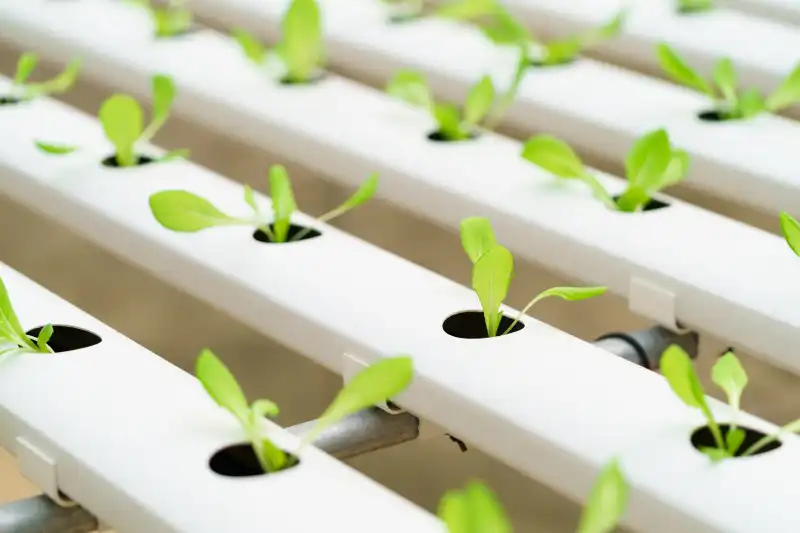
Let’s look at each of these excellent options in greater detail below.
Nutrient Film Technique (NFT)
These types of hydroponic growing systems are beneficial for growing herbs and provide clean and nutrient-rich water, promoting the plants’ healthy growth. Additionally, NFT systems offer a thin layer of water over the roots so that the plants can get enough oxygen and help conserve water, as the system only uses what is needed to hydrate your crops.
NFT systems are particularly well-suited for herbs and plants that don’t have deep rooting systems, like basil, watercress, dill, and parsley, to name a few. Furthermore, NFT hydroponic systems can be modified and tailored for different growing conditions and the kinds of herbs you want to grow, making them flexible and able to meet the specific needs of your plants. 2
Drip Systems
Drip systems are a reliable way to give herbs the nutrients they need. These systems precisely control how much water each herb gets through regulated drips, ensuring each plant receives enough hydration without any risk of overwatering. This gradual water supply keeps the roots from getting too saturated and helps keep the plant healthy and productive. 3
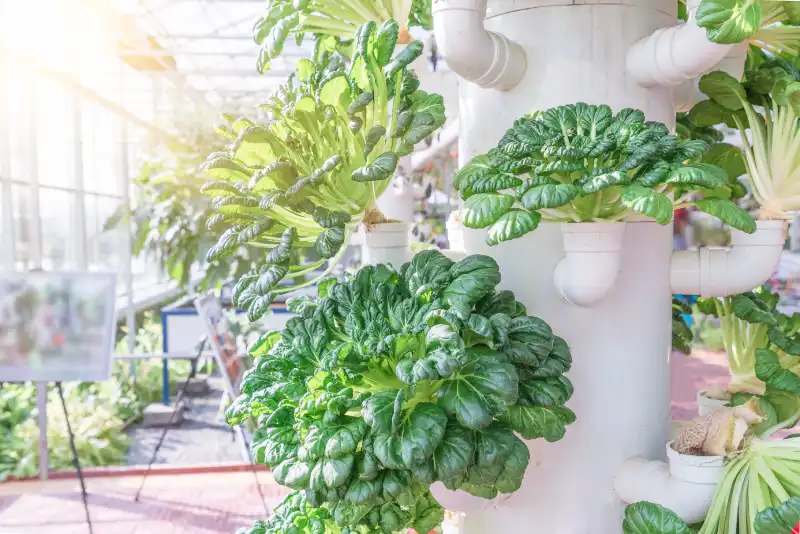
Vertical Tower Systems
Vertical tower systems provide a solution to maximize vertical space, making them highly suitable for urban and indoor gardeners who may have limited space. Vertical hydroponics enable you to grow more herbs in the same area, increasing productivity and maximizing yield potential.
Water and nutrients are delivered from the top of the system and flow down through the tower, ensuring each plant receives the necessary resources. Excess water is collected at the tower’s base and recycled to minimize waste. Positioning herbs at convenient heights in vertical towers allows for easy maintenance and harvesting, facilitating tasks such as pruning, harvesting, and general care. 4
Best Hydroponic Herbs To Grow Indoors
After learning the hydroponic system that best suits your herb cultivation at home, you can start growing your culinary delights in your indoor herb garden. Below is a list of popular herbs you can choose to grow in hydroponics.

Basil And Mint (Lamiaceae Family); Cilantro, Dill, Parsley (Apiaceae Family)
Basil, mint, cilantro, dill, and parsley have specific characteristics contributing to their fast growth in well-managed hydroponic systems. These herbs have a built-in ability to proliferate quickly, even in regular soil gardens, because of their genetic makeup. Their hasty growth habits are naturally boosted when grown hydroponically in favorable conditions.
These herbs are well-suited for hydroponic systems because their roots efficiently absorb water and nutrients from the solution and grow faster. Moreover, because of the abundant water in hydroponics, plant roots don’t have to search for it, ensuring they stay well-hydrated while promoting strong, consistent, and healthy growth. 5
Rosemary, Sage, Oregano (Lamiaceae Family)
One of the primary benefits of these herbs, when grown hydroponically, is their intense flavor and aroma. Hydroponics helps these common herbs grow with the right balance of nutrients, including essential micronutrients, which creates stronger, more distinct flavors and aromas.
As previously mentioned, because these herbs have a steady and balanced water supply when grown hydroponically, their hydration levels remain stable, creating flavorful compounds that give Lamiaceae herbs their robust and unique tastes. On top of that, when growing herbs in this family, you can focus more on producing essential oils responsible for their strong flavors and aromas, making them even more intense and pronounced.
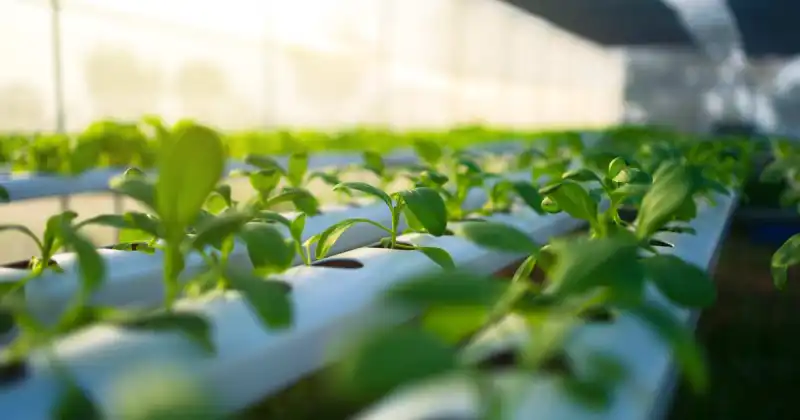
Saffron (Iridaceae Family)
Growing saffron hydroponically offers the benefit of valuable spice production. In hydroponics, growers can carefully control these plants’ nutrients, ensuring they get what they need to produce the best saffron spice. These unique plants are given just the right amount of water and nutrients they require, which helps them produce plenty of flowers, resulting in a larger quantity of their valuable spice, rewarding you, the gardener. 6
With hydroponics, saffron can be grown all year round by creating the perfect conditions, which means you can harvest this valuable herb consistently throughout the year instead of only during a specific growing season.
The video below provides a detailed guide on starting a successful hydroponic herb garden – even if you’re a beginner with minimal space! Remember, herbs can be some of the most expensive produce in the produce aisle, but you can grow what you want organically by cultivating your mouth-watering herbs!
Growing Basil And Sage Microgreens Hydroponically
Regarding the hydroponic setup, growing basil and sage microgreens generally requires a simpler system than cultivating more mature basil plants. Growing your micro herbs can be done in shallow trays or containers filled with a growing medium like coconut coir or Rockwool. These alternatives offer a hydroponic structure where the young basil seedlings can quickly establish their roots and access the nutrient-rich water solution.
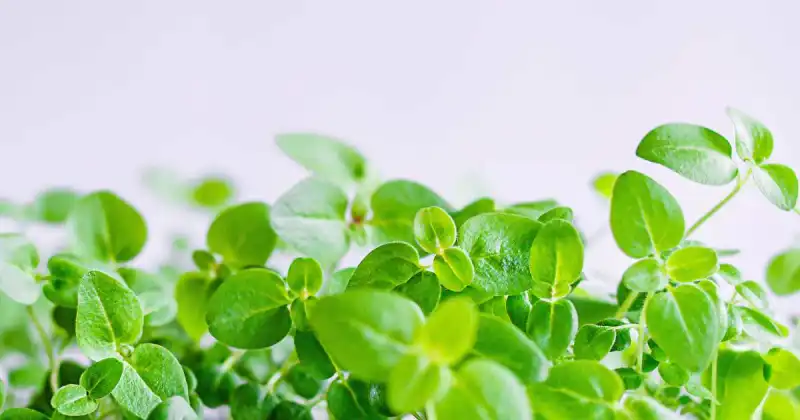
Another distinction is the growth duration. Young basil has a much shorter growth cycle than its more mature counterparts. It is typically ready for harvest within a few weeks, allowing for a quick and continuous supply of fresh baby greens. 7
Indoor Hydroponic Herb Garden: Tips For Growing Herbs Hydroponically
Choosing to develop your herbs indoors hydroponically means growing all year round. Discover how to grow your hydroponic herbs by following these easy steps.

- Choose a suitable location with proper lighting, like LED grow lights and temperature control between 65 to 75 F( 18-24 C).
- Select a hydroponic method or system that fits your space and growing preferences. Remember, several standard designs include Nutrient Film Technique (NFT), drip, and vertical tower systems.
- As needed, gather the necessary equipment, including containers, nutrient solutions, and grow lights. 8
- Choose your favorite herbs and grow them in the containers, ensuring their roots are in contact with the solution.
- Monitor the system, adjust nutrient levels as needed, and maintain a clean and well-maintained environment.
Common Challenges In Herb Hydroponic Growing
Although growing herbs in a hydroponic system, indoors or out, can be easy enough, depending on your setup, you will likely still encounter challenges like pests and diseases that can affect the quality of your hydroponic nutrients. Even if you choose the best herbs to grow in a hydroponic system, you may still face issues or “hiccups” while growing them inside. Let’s explore some common challenges in hydroponic herb gardening and what you can do to amend them.

Pest And Disease Management
Pests like aphids and spider mites are tiny insects that can cause tremendous damage to plants. These pests can target and harm budding plants, while fungal diseases can infect them, stunting growth and even causing death. Observant growers manage the best gardens, so it’s essential to closely watch your plants and take action immediately at the first sign of trouble. 9
Preventing Algae Growth In The Hydroponic System
Algae growth can occur in hydroponic systems, particularly when exposed to excessive light or when the nutrient solution is not adequately managed. To prevent algae buildup, minimize light exposure to the nutrient solution, maintain proper nutrient solution levels by regularly testing your water, and clean and sanitize the system routinely. 10
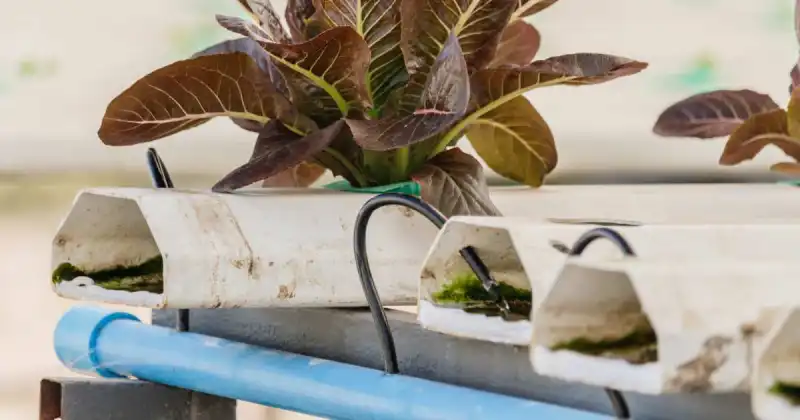
Conclusion
Hydroponic systems for growing herbs offer numerous benefits, such as faster growth, precise nutrient control, water efficiency, and year-round cultivation and satisfaction. It allows for growing hydroponic herbs like basil, rosemary, mint, saffron, and oregano that can thrive in this controlled environment. With its space-saving nature and potential for higher yields, hydroponics presents an exciting and rewarding approach to herb cultivation right in the comfort of your own home.
Do you currently grow herbs hydroponically? What system do you use to reach full and abundant harvests? Take a moment now and drop us a line in the comments below!
SOURCES
- Oklahoma State University – Hydroponics
- University Of Florida – Hydroponics: NFT System
- ResearchGate – Automated Hydroponic Drip Irrigation Using Big Data
- Wikipedia – Vertical Farming
- MDPI – Hydroponic Cultivation Of Medicinal Plants – Plant Organs And Hydroponic Systems: Techniques And Trends
- Missouri Botanical Garden – How To Make A Hydroponic Herb Garden
- National Library Of Medicine, National Center For Biotechnology Information – Determining The Nutrient Content Of Hydroponically-Cultivated Microgreens With Immersible Silicon Photonic Sensors: A Preliminary Feasibility Study
- University Of Minnesota Extension – Small-Scale Hydroponics
- ResearchGate – Assessing Opportunities And Difficulties In Hydroponic Farming
- WikiFarmer – Challenges Of Hydroponics Farming And How To Overcome Them


